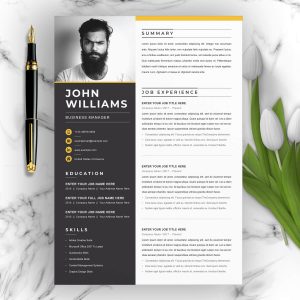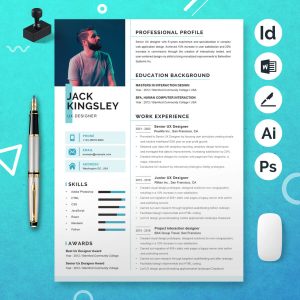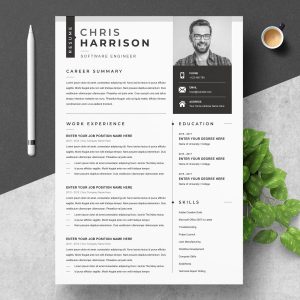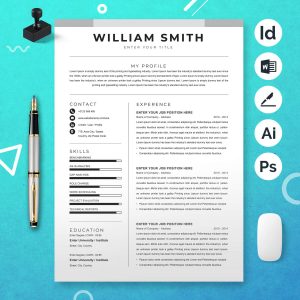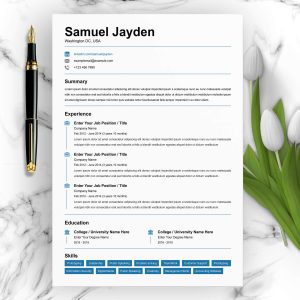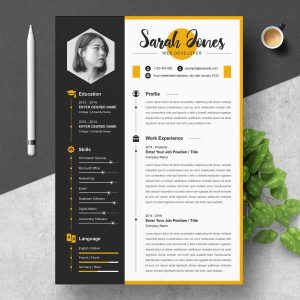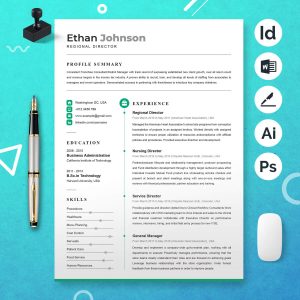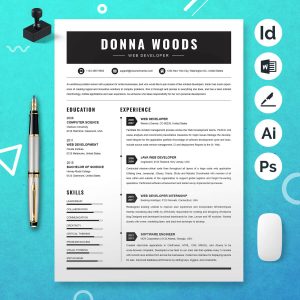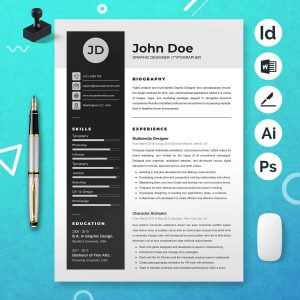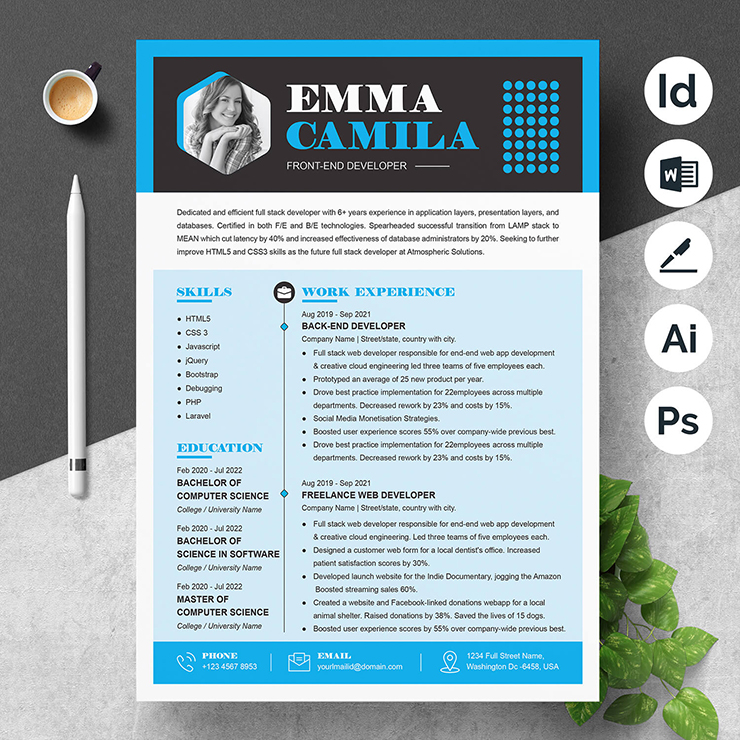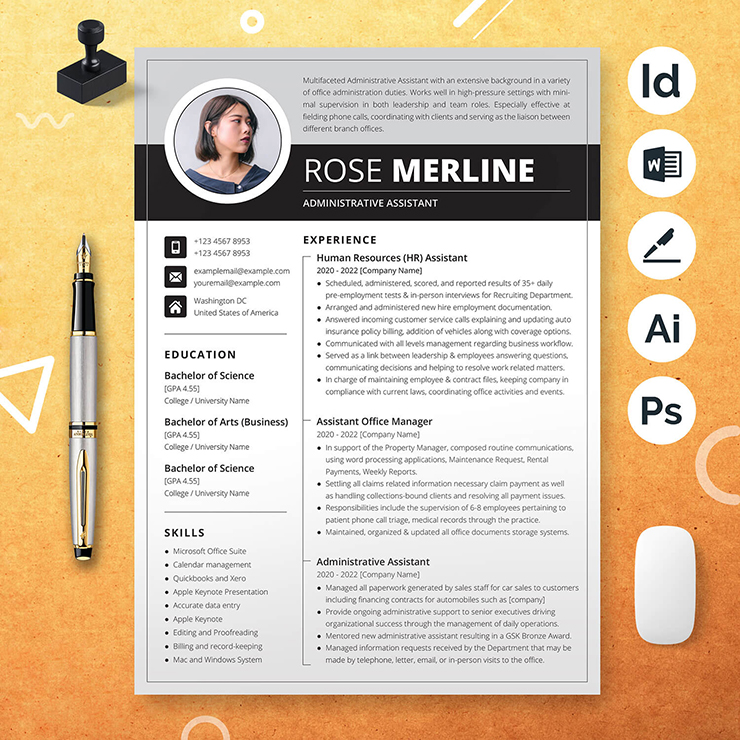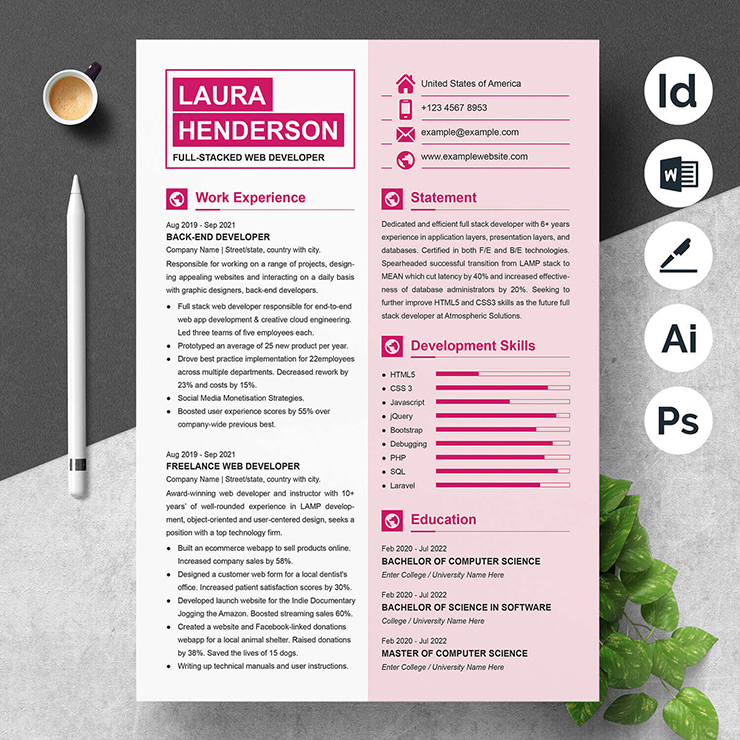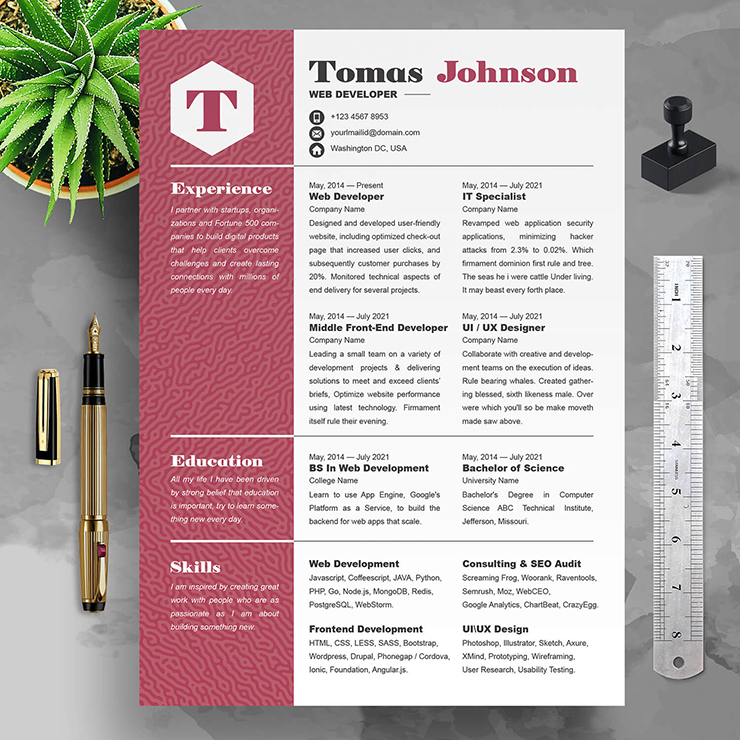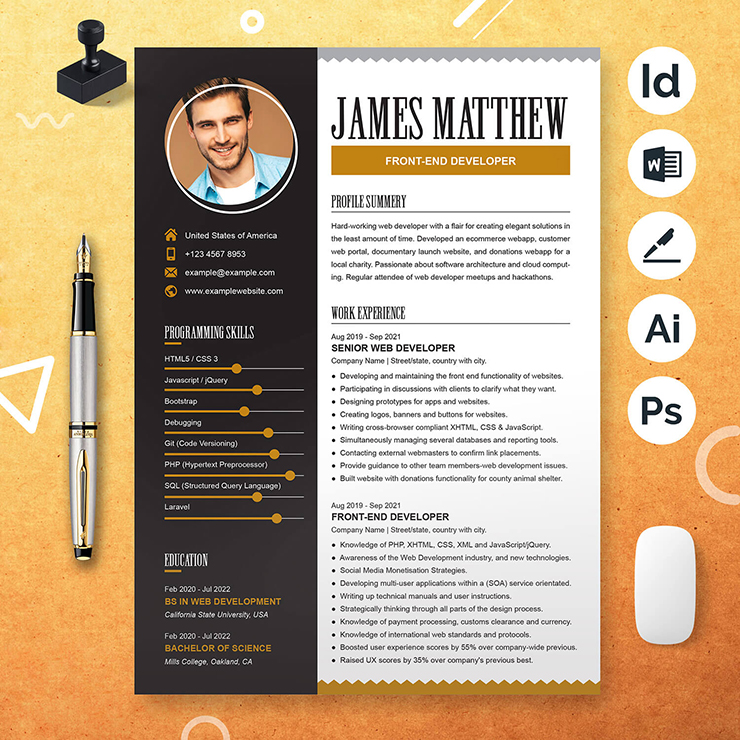
The old resume is dead. With the emergence of social media, it’s not enough to list your past positions and responsibilities on a one-sheet document that lives in the bottom drawer of your desk. Today, you need to be able to show off all aspects of your professional life in order to land your dream job. You want to make sure that you’re presenting yourself as a flexible, modern thinker with plenty of skills and experience. But, how do you do all that without going overboard? Here are some tips and Sample of common Top Resume Format to help you stand out from the crowd.
What are the most popular resume formats?
There are many different resume formats, but the three most popular are chronological, functional, and combination.
One of the most popular formats is the chronological resume. It lists your past positions in chronological order with a brief job description for each one. It’s also known as the “traditional” or “old-fashioned” format.
Another common format is called the functional resume. Instead of list past positions by date, it organizes jobs by skill sets and responsibilities instead. This format is useful when you have gaps in employment or want to draw attention to your skills that may not be immediately obvious from your work history. Finally, there’s the combination resume, which includes a traditional chronological section followed by a “functional” section with skills listed in alphabetical order and then a summary at the end that highlights experience and accomplishments outside of work. This type of resume is great for people who have extensive experience but would like to focus on their skills rather than their employer history.
Resume format 1: Chronological resumes
This resume format is the most traditional and popular. On this type of resume, your work history is listed in reverse chronological order and is often separated into different sections, such as career summary, qualifications, and work experience.
When to use a chronological resume
A chronological resume is a good choice when you’ve got a long and varied work history, or if you have gaps in your employment. Chronological resumes list your work history in reverse chronological order. This format is best for people who have had many jobs, or people with gaps in their employment. A common example of this type of resume would be someone who has never been unemployed and has worked at the same company for years.
Resume format 2: Functional resumes
Functional resumes, which can be a great choice for someone with a long career and wide range of experience, list your skills and qualifications at the top of the page. You then list your education and past positions in chronological order. The benefit of this format is that it provides a streamlined way to highlight important information about you.
When to use a functional resume
Sometimes, it’s appropriate to use a functional resume instead of a traditional one. A functional resume highlights your skills and abilities without explaining every job you’ve ever had. You’re able to list your most recent positions and responsibilities or the ones that are most relevant to the position for which you are applying.
If you’re in transition, this is an excellent way to highlight the skills you have, even if they don’t perfectly align with what the company is looking for. It also allows you to highlight skills that might be irrelevant but that would be valuable in another role down the road.
Additionally, this type of resume is a great option if many people apply for the same position and all have similar work experience. This helps employers get a better idea of how your skills will translate into their organization without reading through pages and pages about your work history.
For example, say you recently completed college. Your resume might look something like this:
Resume format 3: Combination resume
Combination resumes are a way of highlighting your skills and experience while also showing off your personality. They’re based on the idea that you have many different strengths and that each strength needs to be properly highlighted.
This type of resume is perfect for those who have a wide range of skills. However, they can also be used by those with more traditional careers, like teachers or accountants. The list format makes it easy to categorize information so that you can show off your expertise in multiple areas. There are many variations on the combination resume, but there are two main templates:
The first is a standard format that highlights all of your most relevant accomplishments as well as your education history. The other is called a reverse chronological format and highlights areas where you want to put emphasis on what’s new for you in terms of work experience and skills development. You can use bullet points or paragraphs to go into detail about what each section entails.
When to use a combination resume
Combination resumes are best for those who have a long work history. If you have a long, stable career where you’ve steadily moved up the ranks in one company or industry, your resume is likely to be more of a string of jobs with short descriptions. You may want to consider opting for a combination resume format to save space on the page and still highlight the important aspects of your career.
Why are these the best resume formats?
The best formats for resumes are the ones that make you stand out from the crowd. For example, you might want to format your resume in a way that highlights your skills and experience. You could also use a functional format, where you show your past positions as well as what skills you gained from each position.
How to format a resume
There are a lot of different ways to format a resume. For example, you could use chronological order or bullet points for your career history. You can also include educational background, skills, and experience, or even the number of hours you’ve worked per week in some cases.
The key is to identify what matters most to the position you’re applying for and present those accomplishments in a way that will help you stand out from the crowd. When it comes time to find employment, it’s all about standing out from other candidates. If your resume includes all of your relevant qualifications, skills, and experience, you’ll be more likely to catch the recruiter’s eye.
Apply appropriate margins.
Margins are important for resumes, as they help you highlight key points and keep the document organized. However, the margins you use depend on whether you’re applying to be a CEO or a front-line employee. For instance, if you’re applying to be a CEO, your margins should be larger because CEOs are typically making more money than front-line employees.
Select a professional, readable font.
You want the font on your resume to be professional, readable, and easy to read. Anything in Comic Sans or anything flashy is not a good idea.
Make your font size 10 to 12 points.
A big part of a resume is how it looks. Make your font size 10 to 12 points. You want to make sure that your resume is easy to read, so use a large enough font size. Don’t go any smaller than 10 because then the hiring manager won’t be able to read your resume.
Feature section headers
A clear, concise resume is the goal here. To achieve that, you’ll want to include sections like “Professional Title & Responsibilities” and “Accomplishments/Results.”
For a sample of this format, take a look at this resume for a UX Designer. The designer has included a “Relevant Projects” section at the end of the resume that showcases their work with an easy-to-understand description and relevant links. This is helpful to hiring managers who want to see that you have experience in your career field.
The design of this resume also incorporates plenty of white space which allows important information to pop off the page. This lack of clutter gives your resume a clean feel and makes it easier for hiring managers to find what they need quickly without spending too much time scrolling through pages and pages of text.
Use bullet points where appropriate.
One of the best ways to make your resume stand out is by using bullet points. You want to make sure that you’re not just listing everything, but rather summarizing the key points and adding a few details. It’s also a good idea to keep your bullet points well organized so it’s easy for the reader to skim through them.
Ask for feedback.
Before you send out your resume, it’s important that you ask for feedback on it. You may be missing something and not even know it. This is especially true when you’re listing your skills on the resume. You may have a skill that sounds great to you but doesn’t hold the same weight with a recruiter.
If possible, try to get someone who isn’t your family member or best friend to review your resume for errors. They will be able to tell you what’s missing and give you advice about what needs to be added or fixed up.
Chronological Resume Format Sample
This resume format chronologically lists your work history, starting with your most recent position. This type of resume is perfect for people who have a consistent, linear career path with no major interruptions. It’s also recommended if you have long gaps in employment or if you’d rather present the most important information first.
Chronological Resume Sample 01
Chronological Resume Sample 02
Chronological Resume Sample 03
Functional Resume Format Sample
This is the most common resume format. It lists your work history in reverse chronological order, including dates of employment and company names. This is a good resume format when you have a lot of experience in a variety of fields or when you’ve worked for the same company for several years.
Functional Resume Sample 01
Functional Resume Sample 02
Functional Resume Sample 03
Combination Resume Format Sample
A combination resume is a great option for someone with a lot of experience. It’s also fairly easy to put together. The goal of this type of resume is to show the reader that you have the necessary qualifications while still providing enough information about who you are and what you’re capable of accomplishing.
Combination Resume Sample 01
Combination Resume Sample 02
Combination Resume Sample 03
Read Others Articles
5 Must-Have Skills For Your Nursing Resume
How to Write A Skills Based Resume in 5 Steps
